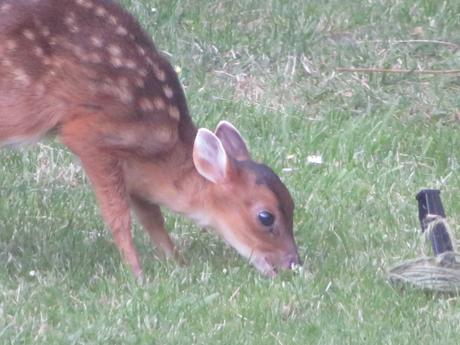You know there are some books or films which make you think differently about ‘stuff’? Well, I have just finished ‘Wilding’ by all the too appropriately named Isabella Tree, and I think her book falls well and truly into that category of ones that make you think, and so, as I am duty bound to say, if you haven’t read it, please do!
In essence, the book describes how the author and her husband decided to switch from loss-making industrial agriculture to actively converting their lands back to nature, inspired by the rewilding projects making headlines in continental Europe. Their story isn’t actually what impels the reader to keep going (it’s not written about a dramatic series of setback, ups and downs, fighting against the odds etc); no, it’s the really interesting insights that come up. Here are some of the more memorable ones.
- Though the UK is full of people who are passionate about nature and care about it deeply, we’re not a country that stands out for its nature. In fact, the 2016 UN State of Nature reported that the UK has lost significantly more biodiversity over the long term than the world average. Ranked 29th lowest out of 219 countries, we are among the most-nature depleted countries in the world. However, there is one area in which we are doing quite well – ancient oaks. A study by the Woodland Trust identified 118 oaks likely to be more than 900 years old in the UK, compared to only 97 oaks of the same age recorded across the whole of Western Europe. And what’s the reason behind this? Well, it’s to do with our political and social history as a nation. ‘Over the centuries, as wars ebbed and flowed across the continent, invading armies and displaced peasants plundered trees for firewood and shelter. Old, hollow oaks were the easiest to axe and the easiest to burn…In England, centuries of peace, primogeniture and the continuation of medieval deer parks as a source of pleasure for the nobility – the context for their stately homes – underpinned our ancient oaks’ survival.’
- It seems that the mental ‘frames’ we use to think about nature are in fact negatively impacting our ability to do good for nature. I don’t want to go into the detail of the evidence which puts forward a convincing picture that England in the ‘olden days’ was not in fact a vast expanse of pristine untouched forest, but instead something messier and less romantic – a shifting scrubland into which trees tried to establish themselves but the ground was constantly been turned over by the grazing large herbivores. But no, this is not what we like to think things were like. ‘This notion, known in scientific circles as ‘closed canopy theory’ has permeated popular culture and become the baseline for our distant past… Closed canopy woodland has become synonymous with nature, and people are seen as its destroyer: it was man who opened up primeval forest, and man who, maintaining the landscape and habitation ever since, prevents the trees from taking over again.’ Scrubland was part of our past and we need to be brave enough to reclaim this.
- The impact of creatures other than humans in determining the character of a landscape is perhaps most vividly illustrated by comparing and contrasting Scotland and Norway, both places which are regarded are being ‘untouched’. Norway is on the same latitude as Scotland with the same acidic peaty soils, similar seasonal temperature changes and in some cases, even higher rainfall and stronger winds, and used to look like Scotland. But an agricultural depression led to a mass exodus of farmers and widespread land abandonment. There was no aristocratic deer stalking and with the removal of sheep, there were barely any grazing mouths left in the region. After a century of removal of grazing pressure, trees cover every available inch of land from sea level up to 1200m. Apart from in Caledonia, there aren’t great profusions of trees in Scotland.
After reading the book, I now look at landscapes differently. Instead seeing rolling green fields dotted with sheep and little hedgerows as pleasing, they appear as barren patches of narrow greenery, whilst the scrubby overgrown patches around the motorway edges or bumpy scraggly patches of land sitting idly waiting to be sold with unkempt bushes as much more positive. In fact, we have the latter some ten minutes from our house. These ‘unwanted’ fields have become a new lockdown walk, special for giving us the opportunity to see a barn owl. Rich wilderness on our doorstep!

